So you’re wondering, “what’s the difference between practicing bushcraft and going backpacking?”
Or maybe you’re wondering how they compare as a skillset and practice. Like two different hobbies in a cage match.
Bushcraft VS. Backpacking
Here is the short and sweet answer but keep reading and we’ll discuss them both, their differences, and how they compare in the wilderness.
Answer:
What is Bushcraft?
Simply put, bushcraft is a popular term for wilderness survival skills. The phrase originates from the bush country of Australia but it has become popular in the UK and North America as people are wanting to connect with nature, learn a new skill and test their skills in the wilderness.
“Many consider practicing bushcraft an
art and it takes a certain kind of rugged mindset to enjoy it.”
What is Backpacking?
Backpacking is when you fill a backpack with camping gear, go hiking somewhere, and camp overnight. You can keep hiking to different spots and do as many or as few nights camping as you’d like. Usually when talking about backpacking some common questions people will ask is, where did you go, how many nights did you stay, and if you hiked back out or made a loop. Not much survival skill needed because of you back in all the camping gear, food, and water you’ll need to stay a comfortable night in nature and make it out alive.
A bit more about bushcraft
It started with people living on the edge of society or even deep in nature. Survival skills are technically as old as people are and as old as people have been surviving in nature with limited resources and tools to use.
More recently as tools have been made specifically for survival and as more knowledge has been shared, bushcraft is essentially having limited supplies and tools and using the natural environment survive.
What you can expect to do when practicing bushcraft.
Common skills involved in Bushcraft:
Ropes and cords
Knots and lashing
Huts and thatching
Campcraft
Food and water
Fire making
Animal habits
Travel and weather
Time and direction
These are things you’ll need to know to survive.

But…
Modern bushcraft isn’t just about surviving, it’s about being able to do all those things in many ways and in many kinds of conditions. Winter, summer, rain and all.
As you’ve probably seen on social media, people that get good at bushcraft build a camp and have everything they need to enjoy nature comfortably. They make it look so nice and fun. And if you enjoy practicing bushcraft then it is.
It’s not just about being able to survive. When it becomes an art it’s about creating a beautiful and usable camp where you can comfortably stay.
You can enjoy a fresh cooked warm meal in the woods and mountains.
You can enjoy the sunset, stars, and sunrise.
You aren’t surviving but thriving in a “from scratch” made camp in the great outdoors.
And that is where backpacking shares a common enjoyment.
So what are the differences between backpacking and bushcraft as well as some things in common and what would be best for you and for certain occasions?
Well as we already discussed, bushcraft is more minimalist. You don’t hike in all your necessities to survive but instead, you build them. That’s where the difference in tools come it to play as well.
When you need to build a fire, shelter, and cooking supplies the tools you bring are different when you don’t need to do any of that.
When you’re backpacking you pack in all the things you need including shelter, water, food, cooking stove, and cooking supplies.
The main differences are that when practicing bushcraft you don’t have a tent or a cooking stove and need to build shelter and make a fire and cooking arrangements.
Over the last decade, there has been a crossover of tools made for bushcraft that could also be used for backpacking. There is a lot of crossovers but keep in mind the main distinction is that bushcraft should be a skill to survive and backpacking requires almost none if any skills to survive because you have all the things you need to survive. The biggest things you need is shelter, warmth, and to be able to cook.
So with bushcraft, no tent or gas stove
With backpacking, whatever you want to back to camp.
No backpacking is different a major way.
Backpacking Differences
When backpacking you want to have as light of a pack as possible while including all the necessities. Backpacking gear has been engineered and manufactured over the decades to be as useful and light as possible.
Think small lightweight tents that keep you dry in a rainstorm and can provide good shelter.
Sleeping bags that keep you warm but can compress down very small and light.
Clothes, dry food, stoves, small gas tanks, backpacks themselves all are made to be as efficient and light as possible.
One difference when practicing bushcraft is since you are not backing in a lot you can carry some heavy items like a cast iron pan to cook in. Sure it’s 5 pounds compared to the backpacking cooking set and a gas stove which is under 5 pounds but you don’t have the stove, gas, or tent.
To understand backpacking and bushcraft differences a bit more, here is a list of commonly used bushcraft tools followed by a list of backpacking supplies.
Bushcraft tools:
Necessities
- Backpack
- Backs and sacks to group items
- Several knives
- Cooking knives
- Fillet knive
- Wood Carving knives
You want to keep your eating knives clean while you use a carving knife for woodworking
- Water Filter
- Hatchet and/or ax with a hammer back
- Tarp shelter
- Working gloves
- Rope, string, twine
- Warm clothes and hiking boots (what you hike in wearing)
- Blanket
- Wood saw
- First aid kit
- Compass
- Metal canteen for boiling water and carrying water
- Cooking pan and/or pot
- Toiletries (paper, toothbrush, toothpaste, deodorant)
- Food for backup (canned food, veggies, fat rich food items)
Note: If you are in bear country, make sure you have bear mace and hang all smelling items 100 yards away from where you are sleeping and hang everything in a bag 10 – 15 feet in the air.
Optional but nice to have bushcraft supplies
- Headlight or other electric light
- Sleeping Pad
- Sleeping bag
- Wood stove for cooking
- Biodegradable dish soap for cleaning dishes
- Flint and fire starting kit
- Survival kit
- Cooking utensils
- Extra pair of clothes and long underwear
Many of these items you will also have when you go backpacking. The main differences are dropped all the knives and ax and add a gas stove and tent. And you’ll need most of the “optional but nice to have” supplies too. Not just the necessities.
Places to practice bushcraft
You may think you can go into any forest or part of nature to practice bushcraft. Think again. Most wilderness areas people visit are protected and designated wilderness that has left no trace regulations and laws to protect the natural environment and so it stays pure for all those who visit.
If you hike to a camp and build a structure, cut down trees, and build a camp, you are breaking the law. At least if you are in these protected wilderness areas. National forests, parks, state parks, and wilderness areas usually fall into this category. So how can you get out to practice?
Well, the best way is to find the grey area between wilderness and national forests they are two separated and overlapping designations. You’ll also want to make sure you take down your camp every time and leave the area as close to as you found it as possible. Make sure it’s okay to cut down shrubs and trees. It’s hard to find places in the US.
Imagine if there were thousands of people going into the wilderness to practice bushcraft and cutting down vegetation and building structures?
It soon wouldn’t be wilderness anymore but more like hobo camps.
Backpacking, on the other hand, is enjoyed best in the places just described.
National parks, national forests, and wilderness areas are the best places to go backpacking and is where most do so.
You may need a backcountry pass for a small fee of around 20$ or so to camp in most national parks but you don’t need one to hike in and camp in a national forest.
So there you have it. An analysis of and description of the art of bushcraft and backpacking. From the gear to the differences and how and where you can do both.
I’d love to hear any of your thoughts about bushcraft or backpacking in the comments below.
Where do you practice bushcraft?
What are some of your favorite pieces of equipment to pack in?
Let us know in the comments below.
Also, make sure to subscribe to join the experience so you don’t miss future blogs and discussions. You’ll also get 15% off at the shop when you join the Göra-Liv experience.
Till next time, take the time to connect with nature, experience new adventures, and Do-Life.
Here are some videos on the subject as well.
Bushcraft and backpacking are two popular outdoor pursuits that share some similarities, but also have some key differences. In this blog post, we will take a closer look at both activities and explore the pros and cons of each.
What is Bushcraft?
Bushcraft is the art of living and surviving in the wilderness. It encompasses a wide range of skills, including:
- Firecraft
- Shelter building
- Tool use
- Foraging
- Navigation
- Wilderness first aid
Bushcrafters typically focus on learning how to use the natural world to their advantage. They may use natural materials to build shelters, cook food, and start fires. They may also learn how to identify edible plants and medicinal herbs.
What is Backpacking?
Backpacking is the activity of hiking with all of your gear carried in a backpack. It is a more specialized form of hiking that typically involves overnight or multi-day trips. Backpackers typically carry a wide range of gear, including food, water, shelter, clothing, and cooking supplies.
The Differences Between Bushcraft and Backpacking
There are a few key differences between bushcraft and backpacking.
- Gear: Bushcrafters typically carry more gear than backpackers. This is because bushcrafters need to be self-sufficient in the wilderness, and they may need to carry tools and materials for building shelters, starting fires, and cooking food. Backpackers, on the other hand, can often rely on pre-made shelters and food, so they can carry less gear.
- Skill level: Bushcraft requires a higher level of skill than backpacking. Bushcrafters need to know how to use a variety of tools and materials, and they need to be able to identify edible plants and medicinal herbs. Backpackers, on the other hand, can often get by with a lower level of skill, as they can rely on pre-made gear and food.
- Pace: Bushcraft is typically a slower-paced activity than backpacking. Bushcrafters take the time to learn about the natural world and to practice their skills. Backpackers, on the other hand, are often focused on covering ground, so they may move at a faster pace.
The Pros and Cons of Bushcraft and Backpacking
Both bushcraft and backpacking have their own pros and cons.
Bushcraft:
- Pros:
- You learn valuable skills that can help you survive in the wilderness.
- You are more self-sufficient and independent.
- You get to experience the wilderness in a more immersive way.
- Cons:
- It requires a higher level of skill and knowledge.
- It can be more time-consuming and expensive.
- It can be more challenging, especially if you are not experienced.
Backpacking:
- Pros:
- It is a great way to see the wilderness.
- It is a relatively easy activity to get into.
- It can be a great way to get exercise.
- Cons:
- You are not as self-sufficient as you would be in bushcraft.
- You may have to rely on pre-made gear and food.
- It can be more expensive than bushcraft.
Which is Right for You?
The best way to decide whether bushcraft or backpacking is right for you is to try both activities and see which one you enjoy more. If you are interested in learning valuable skills and experiencing the wilderness in a more immersive way, then bushcraft may be a good option for you. If you are looking for a more easy-going activity that allows you to see the wilderness, then backpacking may be a better choice.
Ultimately, the best way to enjoy the outdoors is to find an activity that you are passionate about and that fits your interests and skill level.


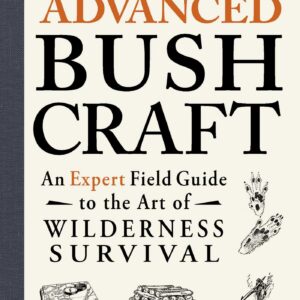
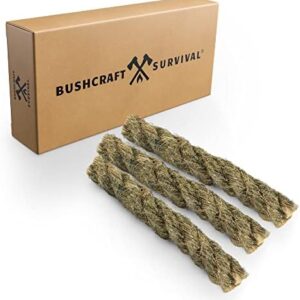
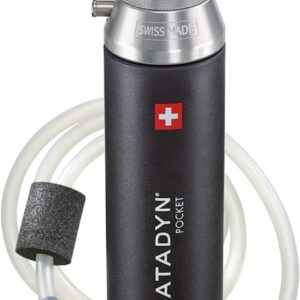
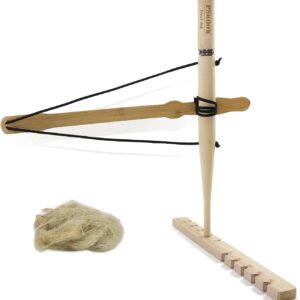

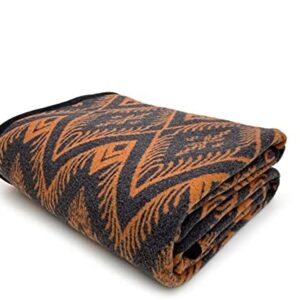
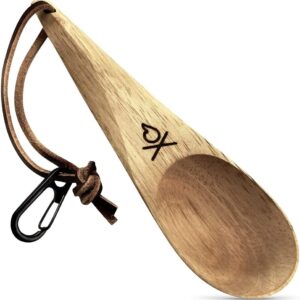

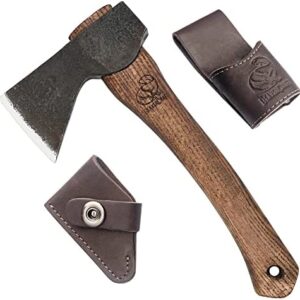
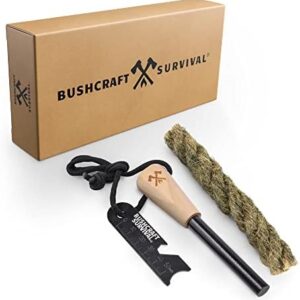
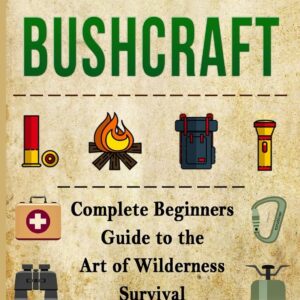
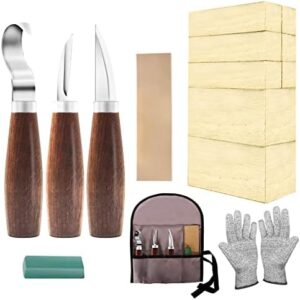
0 Comments